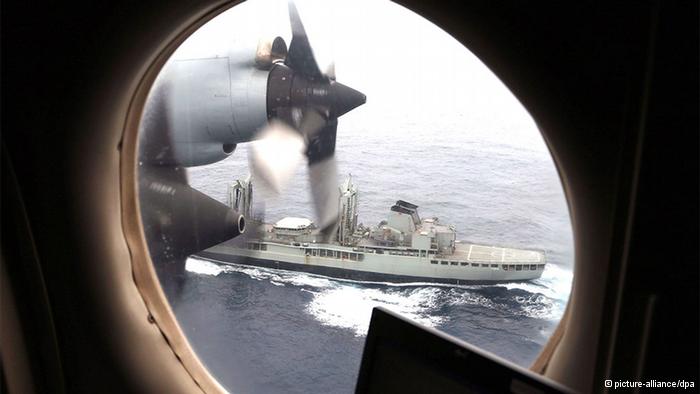Australia has widened its search for a missing Malaysian Airlines flight after more airpower joined the effort. The move comes after French satellites spotted potential “floating debris” in the southern Indian Ocean.

Chinese and Japanese planes on Monday joined the renewed search effort for a Malaysian airliner that has been missing more than two weeks. Australian authorities have been scouring an area 2,500 kilometers (1,500 miles) southwest of Perth after several satellite sightings of potential debris, but so far nothing has been found.
On Sunday French satellites revealed potential “floating debris” several hundred kilometers away from the area where previous pictures from Australian and Chinese satellites had found possible wreckage.
Search area widened
Satellite information has narrowed the search area to a 59,000 square kilometer area of the southern Indian Ocean, one of the most-remote places on Earth. Australia’s Deputy Prime Minister Warren Truss said Monday the search for flight MH370 was promising, but poor weather conditions made the operation difficult.
“It’s a lot of water to look for just perhaps a tiny object,” he told ABC Radio. “Today we expect weather to deteriorate and the forecast ahead is not that good so it’s going to be a challenge, but we will stick at it.”
Truss said the potential debris located by French satellites, which France’s foreign ministry said came in the form of “satellite-generated radar echoes,” was not in the initial search area, but rather 850 kilometers to the north.
“That’s not in the area that had been identified as the most likely place where the aircraft had entered the sea,” he said. “But having said all that we’ve got to check out all the options.”
Australian, US and New Zealand planes have been searching for signs of the airliner for days, while the extra Chinese and Japanese airpower joined the hunt Monday.
Truss said Sunday’s efforts proved “fruitless” and Monday’s could be hampered by weather from Tropical Cyclone Gillian, which is expected to track at least 1,000 kilometers north of the search zone.
“Clearly it won’t be cyclonic when it gets down to the freezing waters that we’re dealing with with this search,” he said. “But certainly it could stir up less favorable weather.”
Continued uncertainty
Truss cautioned that despite the new information, “we still don’t know for certain that the aircraft is even in this area.”
“We’re just, I guess, clutching at whatever little piece of information comes along to try and find a place where we might be able to concentrate the efforts,” he said.
The Malaysian Airlines Boeing 777 vanished on March 8 while en route from Kuala Lumpur to Beijing. The plane and its 239 passengers and crew remain missing.
Malaysian Investigators believe someone deliberately shut off the plane’s communication systems during the flight. Military radar appears to have tracked it turning west and re-crossing the Malay Peninsula. Electronic “pings” detected by a commercial satellite suggested the plane flew for another six hours or so, but its whereabouts could only be narrowed to two vast arcs.
A Malaysian statement said a “high-level” team on Sunday briefed relatives of the passengers and crew, who have consistently complained to authorities in Beijing and Kuala Lumpur about the lack of information coming out of the investigation.
dr/av (Reuters, AFP, dpa)
Source: DW.DE







